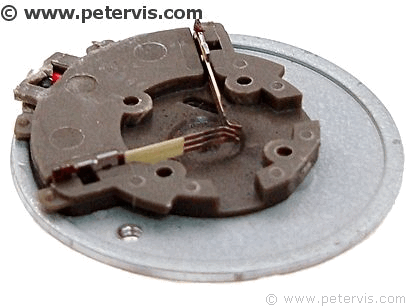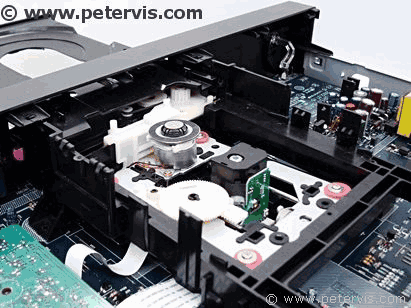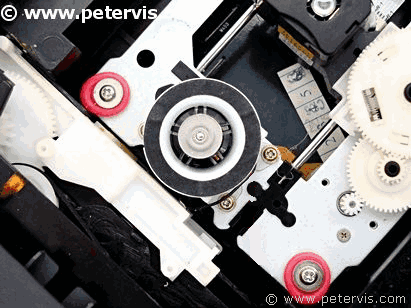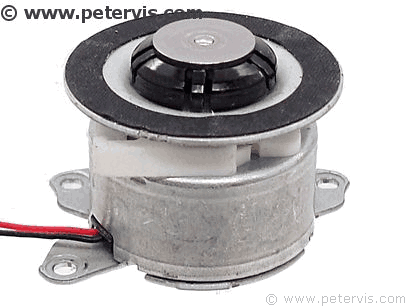CD Player Motor Not Spinning

If your CD player motor is not spinning, then chances are that it has quit working and your prized high-end CD player has the option of either being repaired at a service centre or ending up in landfill. However, the cost of repairs is often the same as the cost of a new blu-ray player, and since everyone likes the latest gadgets, it will very likely end up in landfill.
The motor is an electromechanical component, which tends to wear out first because it is in constant use, and it is the one part, which reaches old age before any other. Interestingly, the laser diode tends to be the second, component to fail after the motor.
Nothing is forever...
Back when I was a whippersnapper, I bought my first CD player, foolishly thinking it was for all time, and I polished all the chrome and displayed it majestically on my hi-fi stack. After a year, it started to skip tracks; however, I ignored it thinking that it might be just a defective CD. Eventually it started skipping tracks on all the CDs that I inserted, and would not play any CD.
As I was "training" :-) to be an engineer and was very poor, I decided to open the unit to see if there was anything, I could do. I found that the motor would not spin at all. Pressing the play button resulted in a slight movement of the CD, but there was no rotation. Of course, just like a chimp I scratched my head, and used my gorilla thumb to push the CD to help it along the way, and to my surprise it began spinning!
Replacement Motors
One of the most commonly used motors is the DVD MOTOR D/V 5.9 V RF-300C-11440. Kenwood, JVC, Marantz, Onkyo, and many more, use this motor in their consumer electronics products, because Mabuchi manufacture some of the best ones for such CD players and portable devices. This motor has a very small size, and its body diameter is 24.4 mm, height 12.3 mm, spindle height 6.05 mm, and they are often the most common replacement motors in use today.
The RF-300CA Series
The 300CA-11440 has an operating voltage range of 0.4 V to 5 V. Its maximum speed without load is 2200-rpm drawing a current of 0.018 A. Its output is 0.049 W and its stalling torque is 12 g•cm.
The 300CA-11400 is another very similar model, which has an operating voltage range of 1.2 V to 6 V. Its maximum speed without load is 3700-rpm drawing a current of 0.018 A. However, its stalling torque is 20 g•cm.
The 11400 version is used in DVD players, because DVDs require a greater rpm, and torque, whilst the 11440 version is used in CD players.
The RF-300FA Series
Mabuchi also make the RF-300FA, which is for DVD players. These are the torque-up types. The RF-300FA-11420 has an operating voltage range of 1.7 V to 6 V. Its maximum speed without load is 2900-rpm drawing a current of 0.068 A. Its maximum torque is 22 g•cm.
The RF-300FA-12350 has an operating voltage range of 1.5 V to 6.0 V. Its maximum speed without load is 3500-rpm drawing a current of 0.093 A. Its maximum torque is 26 g•cm.
Whenever possible, and if the circuit allows it, I always upgrade to the faster higher torque motors. All of these motors are available on eBay, however I have noticed that some seller from abroad may remove the labels, and since the motors are identical in shape and size, it is difficult to determine exactly what they have sent you. Therefore, this is something to look out.
The Yellow Wire
If your motor has an additional yellow wire, then chances are that it has a hall-sensor type mechanism to provide rpm information. Generally, very few motors like this are in CD transport mechanisms today.
One place to find replacement motors is eBay. There are many sellers, and the price can vary from as little as 2.00 to around the 4.00 mark. Generally, I have not had any problems from sellers. Occasionally, you get a seller sending you a motor without a label.
A look inside a worn out motor

Here is a typical motor found in a DVD player. The same manufacturer in the Far East will likely have made it whether it came from a cheap supermarket brand or a high-end machine.
Majority of the transport mechanisms found today are the same clones of the original Sony / Philips design, mass-produced, and made of plastic. They will have the same type of spindle motor for spinning the CD, and their brushes generally wear out at around the same time.
These motors are getting increasingly smaller and found everywhere. They are in cars, hi-fi, computers, laptops, and they can be a real pain when their brushes wear out.

I took one of my old CD motors apart to see how it was constructed, and to check whether it was really worn out.
As you can see, the carbon contacts have all but worn out and it is now down to the copper terminals. I can still get a few more hours from this motor though. Just clean it with some robot aftershave (WD40), and cross your fingers.

On a conventional motor, it is the coil windings wound on a rotor shaft that spins -- If I remember that Science Museum model I saw back when I was 12. Since the coil windings need to be in constant connection with a circuit, brushes are used.
The formers are made of iron, and therefore the slightest amount of moisture can get them to rust. I have seen motors taken out of car CD players full of rust. Had this motor been in storage and not used, it still would have failed, because of the build-up of rust. The distance between the formers and the cylindrical magnet, which surrounds it is very small and flaking rust would prevent the motor from turning freely.
When a tape recorder has been stored for a long time, one sometimes finds a jammed motor. This type of problem occurs more in car CD players though. I can see why cleaning this with some robot aftershave can prevent rust and help to lubricate.
Replacing a worn out motor

This one is a very simple mechanism to repair, as the spindle motor is easily accessible from the top; one simply has to slide the tray back to gain access. Spindle motors tend to drive the CD directly and there are no other mechanisms such as gears required; hence, they are one of the easiest components to replace.

Here is a view showing the spindle motor. The height of the motor, and the height of the shaft, are very critical for proper laser focusing and alignment.

As you can see, the motor secures to a base plate, and that is fixed to the platform by three screws. Undoing these screws will detach the motor from the platform.

These are tiny screws; hence, a nice sharp screwdriver bit is necessary.

The motor I bought came with a base plate; however, that plate did not have the holes in the correct places. Thankfully, the base plate fixes to the motor with two tiny screws, and I was able to remove it and fit the original one instead.
Once the replacement motor is in place, one simply has to solder the wires and tape them. I hope the motor spins, and there will be one more CD player saved from landfill.
